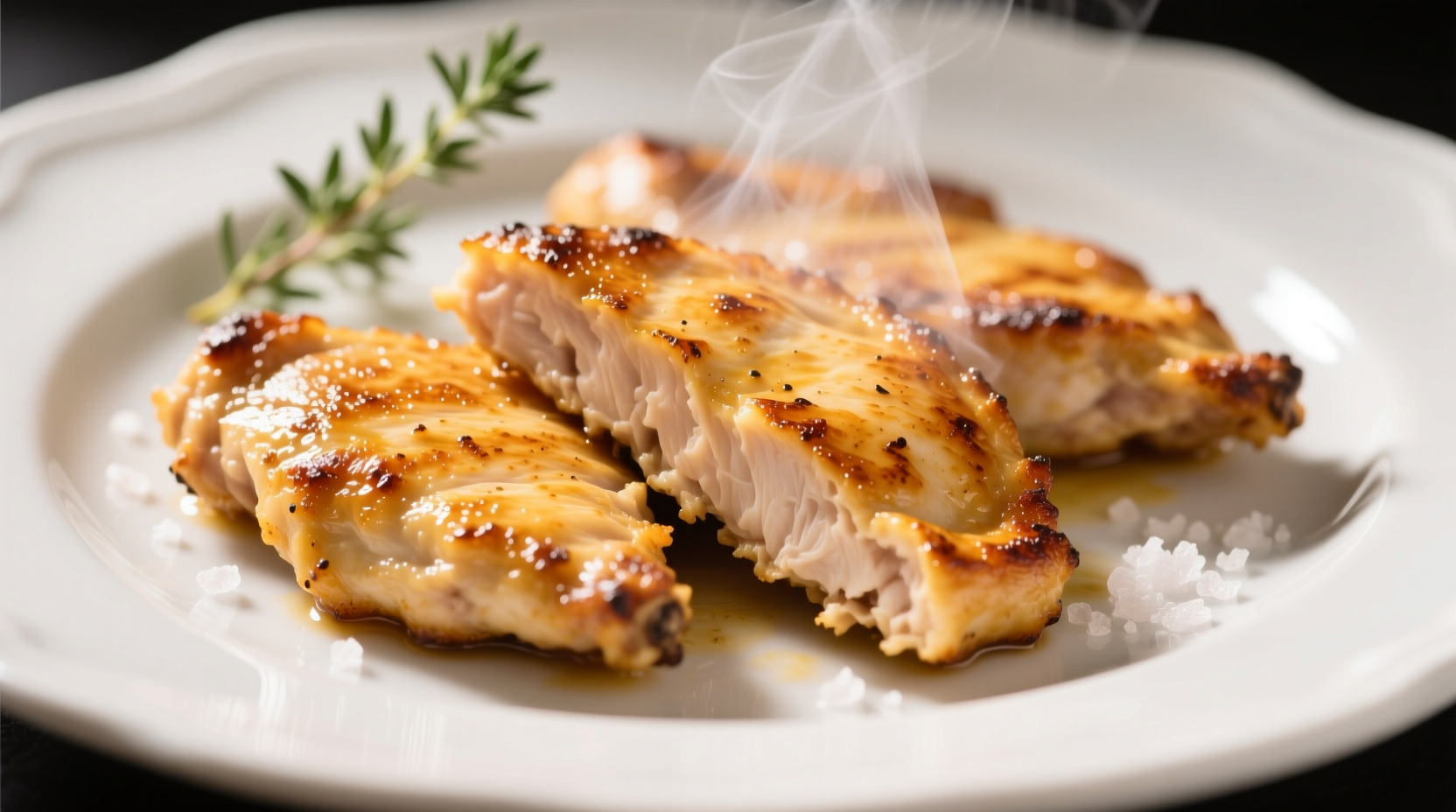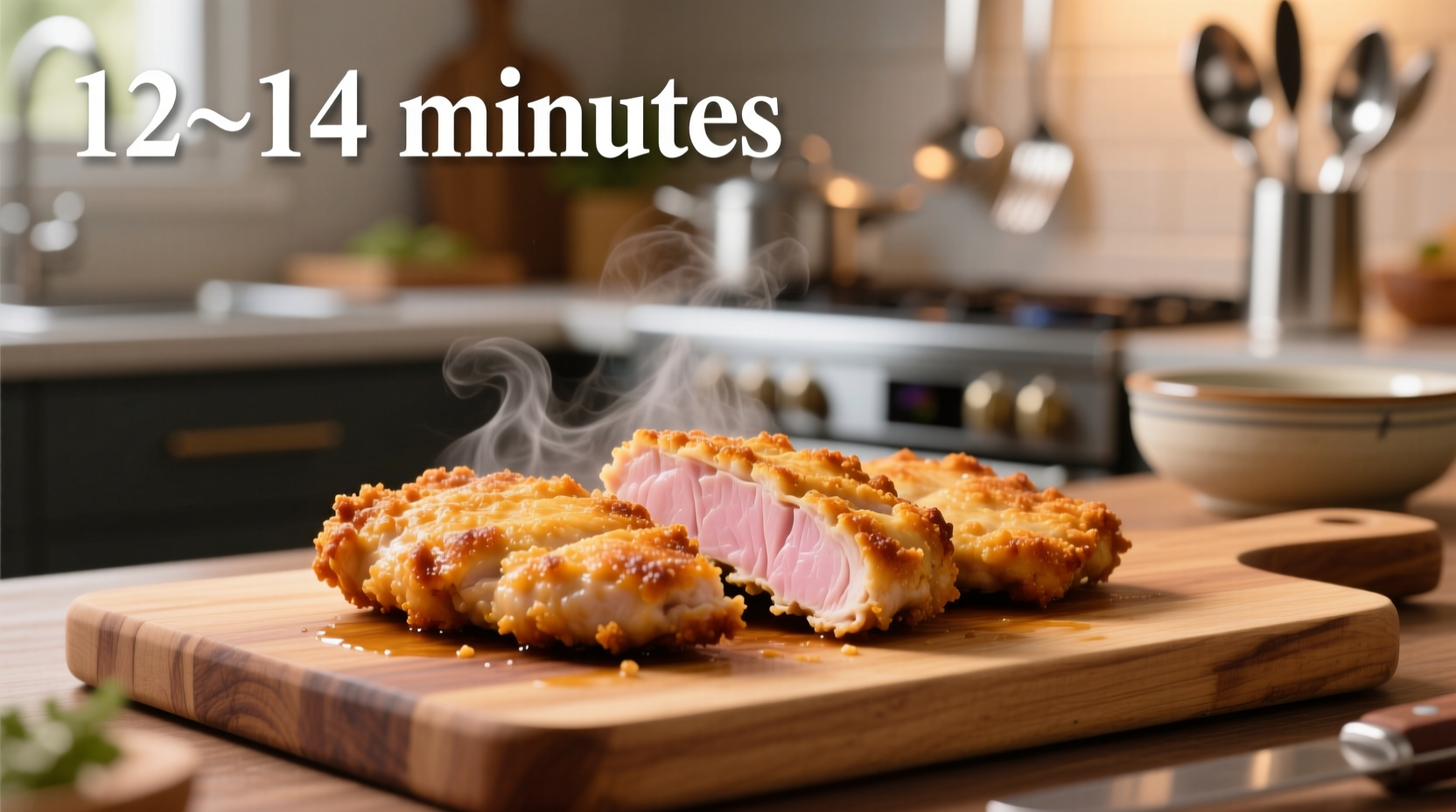Getting chicken cutlets just right requires precise timing and temperature control. Undercooked chicken poses serious food safety risks, while overcooked cutlets become dry and tough. This guide delivers exactly what you need to know to cook perfect chicken cutlets—whether you're a beginner or looking to refine your technique.
Why Proper Cooking Time Matters for Chicken Cutlets
Chicken cutlets cook quickly due to their thin profile, making timing critical for both safety and quality. The USDA Food Safety and Inspection Service confirms that poultry must reach 165°F (74°C) internally to eliminate harmful bacteria like salmonella (USDA FSIS). Unlike thicker chicken pieces, cutlets have minimal margin for error—just 30 seconds too long can transform juicy cutlets into dry disappointments.
Key Factors That Affect Chicken Cutlet Cooking Time
Understanding these variables helps you adjust cooking time for perfect results every time:
Cutlet Thickness: The Primary Timing Factor
Standard chicken cutlets range from ¼ to ½ inch thick. Thicker cutlets require longer cooking, but flipping too early causes sticking. Here's how thickness impacts cooking time:
| Cutlet Thickness | Stovetop Time Per Side | Total Cooking Time | Internal Temp Check Point |
|---|---|---|---|
| ¼ inch (standard) | 3-4 minutes | 6-8 minutes | After 5 minutes |
| ⅜ inch | 4-5 minutes | 8-10 minutes | After 6 minutes |
| ½ inch | 5-6 minutes | 10-12 minutes | After 8 minutes |
Starting Temperature: Chilled vs. Room Temperature
Cold cutlets straight from the refrigerator require 1-2 minutes longer per side than those brought to room temperature. However, food safety experts at Kansas State University's National Center for Home Food Preservation warn that leaving chicken at room temperature for more than 30 minutes increases bacterial growth risk (NCHFP). The solution? Pat cutlets dry with paper towels before cooking—this reduces surface moisture that causes steaming instead of searing.
Cooking Method Comparison
Different cooking methods yield different timing requirements while maintaining the critical 165°F endpoint:
- Stovetop (skillet): 3-4 minutes per side over medium-high heat—ideal for golden crust development
- Oven-baked: 12-15 minutes at 400°F (204°C)—best for multiple cutlets without flipping
- Air fryer: 8-10 minutes at 375°F (190°C)—produces crispy texture with less oil

Step-by-Step Guide to Perfect Chicken Cutlets
Preparation: Setting Up for Success
Proper preparation prevents common timing mistakes:
- Thickness consistency: Pound cutlets to even ¼-inch thickness using a meat mallet or rolling pin—uneven thickness causes部分 to overcook while other parts remain raw
- Dry surface: Pat thoroughly with paper towels—moisture creates steam instead of sear
- Season just before cooking: Salt draws out moisture; apply 5-10 minutes before cooking for best results
- Preheat properly: Heat oil until shimmering (about 350°F/177°C)—test with breadcrumb that sizzles immediately
Cooking Process: Timing and Technique
Follow these steps for precise timing:
- Place cutlets in hot skillet without crowding (cook in batches if needed)
- Cook undisturbed for full 3-4 minutes to develop golden crust
- Flip once using tongs—never pierce with fork which releases juices
- Cook second side 3-4 minutes while monitoring internal temperature
- Remove at 160°F (71°C)—temperature will rise 5 degrees during resting
Avoiding Common Timing Mistakes
Even experienced cooks make these timing errors:
- Flipping too early: Causes sticking and uneven browning—wait until cutlet releases naturally from pan
- Overcrowding the pan: Lowers temperature and creates steam—use single layer with space between cutlets
- Relying solely on time: Always verify with thermometer—CDC reports that color alone doesn't indicate safety, as chicken can appear done before reaching 165°F (CDC)
- Skipping rest time: Cutting immediately releases juices—rest 3-5 minutes for juicier results
Doneness Testing: Beyond the Clock
While timing provides a baseline, these methods confirm perfect doneness:
- Digital thermometer: Insert into thickest part—165°F (74°C) is the safe minimum
- Visual check: Clear juices (not pink) when pierced at thickest point
- Texture test: Firm but springy to touch—similar to the base of your thumb when making an OK sign
- Cut test: As last resort, make small incision to check for opaque white meat throughout
Serving and Storage Guidelines
Proper handling after cooking maintains safety and quality:
- Rest cutlets 3-5 minutes before serving to redistribute juices
- Refrigerate leftovers within 2 hours (1 hour if room temperature exceeds 90°F/32°C)
- Store in airtight container for up to 3-4 days
- Reheat to 165°F (74°C) using method that preserves texture (air fryer preferred over microwave)











 浙公网安备
33010002000092号
浙公网安备
33010002000092号 浙B2-20120091-4
浙B2-20120091-4